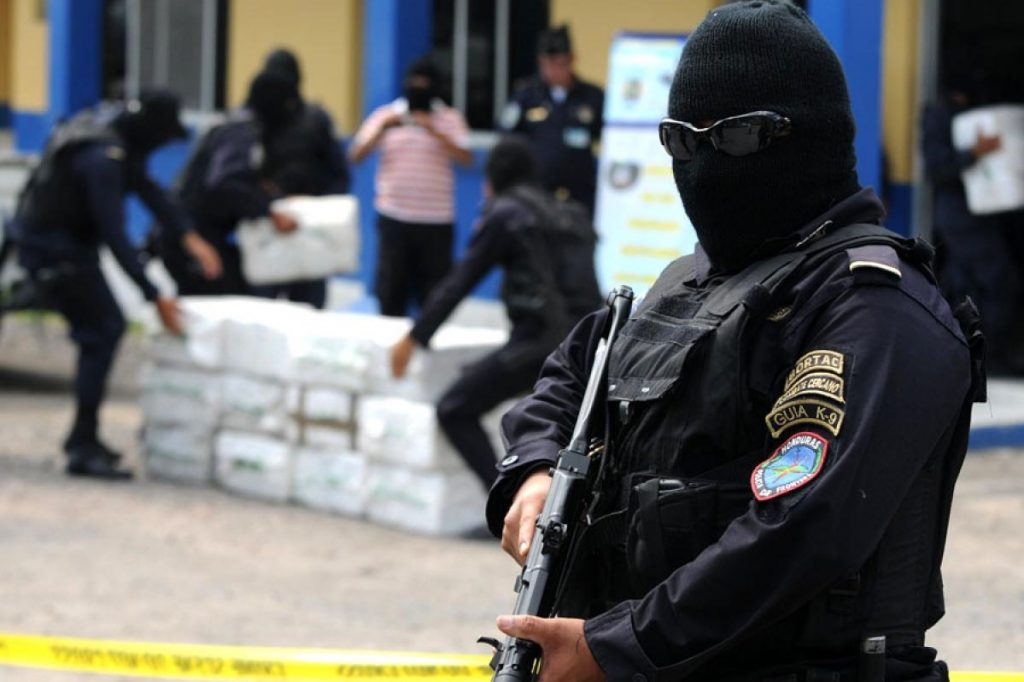AFP photo
By
Ricardo Swire
Recently an in-house watchdog group, comprised of the US State and Justice Departments’ officials, pointed out a series of blunders regarding the conduct of the Drug Enforcement Administration (DEA) Foreign-deployed Advisory & Support Team (FAST) operations in Honduras. The May 24,2017 US governmental report questioned three particular DEA/Honduran National Police (HNP) Tactical Response Team (TRT) missions performed with deadly force.
As a label “Operation Anvil” joins DEA overseas counter-narcotics codenames such as Blast Furnace, Ghost Zone, Snowcap, Zorro and Mexico’s La Campaña Permanente. From mid-2010 to December 2011 seven drug planes were seized in Honduras. The US watchdog group found one particular incident “suspicious” and “significantly flawed.” In the first Operation Anvil questionable scenario, the teams traveled via four State department Huey helicopters, ten DEA FAST agents, eighteen HNP TRT officers and eight pilots departed a base near La Ceiba city, the site used as a refuelling station in the lowlands of La Moskitia, on the Honduran side of Mosquito Coast.
Previous intelligence data approximated one hundred suspicious flights transit Honduras annually. On May 11, 2012 a US Customs & Border Protection (CBP) aircraft, equipped with special electronic detection and surveillance capabilities directed a DEA FAST /HNP TRT section to coordinates near Ahuas, a town on Honduras’ northeast coast, the location of a secret landing strip for drug flights. A plane was intercepted on the makeshift tarmac, offloading a consignment from one speedily abandoned “pipante’ or motorized canoe on the flanking river, a truck parked nearby.
The plane’s charts showed red lines or “spaghetti slides” veining South America and North America, its flight path started in Venezuela and navigated north, avoiding Colombian airspace, then diverted west to Moskitia Honduras. One DEA FAST agent with two HNP TRT officers boarded the motorized canoe to sail it back to shore. However, the engine malfunctioned and the pipante became uncontrollable. It collided with a bigger boat navigating the river without lights, more than twelve individuals aboard the unidentified watercraft.
Under moonlight shooting ensued and four civilians died, several injured. The DEA’s documented account did not mention Honduran dead or casualties, stipulating individuals on the larger boat opened fire first, at the three FAST & TRT officers traveling aboard the pipante and only Honduran TRT officers returned fire. The HNP TRT version collaborated “multiple suspects fired at the TRT and the TRT returned fire for a few minutes.” However, the US State & Justice Department joint Report penman found “there is no video evidence of gunfire from anyone on the passenger boat, a FAST team member who directed a Honduran door gunner to fire on the boat from the helicopter.”
The May 2017 Report’s second doubtful DEA incident occurred June 23, 2012, when a DEA FAST agent killed a suspected drug trafficker. Honduras’ formal narrative said the man was put to lay face down on the ground near a tree. FAST agents reported “he refused to comply with oral commands and moved his hand towards a handgun holstered on his hip.” The third questionable scene took place July 3, 2012, “False reporting” and “inappropriate HNP TRT behavior” the US watchdog group’s dilemma.
In this incident the multinational counter-narcotics team detained a crashed drug plane pilot, who subsequently died from crash sustained injuries. A second pilot refused to comply with FAST/TRT officers’ instructions and turned to re-enter the plane, “giving rise to the threat that he would obtain a weapon.” He was shot dead by two DEA FAST members. Initially, both the State Department and DEA internally supported this version. HNP TRT officers never mentioned FAST colleagues shooting, or use of deadly force, in their official account.
When questioned by autonomous investigators DEA administrators said; “Following the incident a Honduran police officer planted a gun in evidence and reported it as a weapon found at the scene.” Caribbean internal security professionals recognize Operation Anvil as the legal framework of police action, utilizing hardware and rhetoric of war. Honduras is routinely referred to as “downrange,” drug traffickers tagged “the enemy” and the Mosquito Coast a “battle space.
Operation Anvil was like the US$1.9 billion Mérida Initiative in Mexico that relied heavily on enforcement driven strategy, tactics similar to Plan Colombia’s military and diplomatic aid initiative that provided aircraft, equipment and specialist training. The US dual Department Report said “inadequate pre-operational planning” contributed to Operation Anvil’s use of unnecessary deadly force. The formal document surmised; “FAST and TRT personnel had unclear understanding of what each other’s deadly force policy permitted and the planning for responding to critical incidents was almost non-existent.”
Ricardo Swire
Ricardo Swire is the Principal Consultant at R-L-H Security Consultants & Business Support Services and writes on a number of important issues.



No Comments Yet!
You can be first to comment this post!